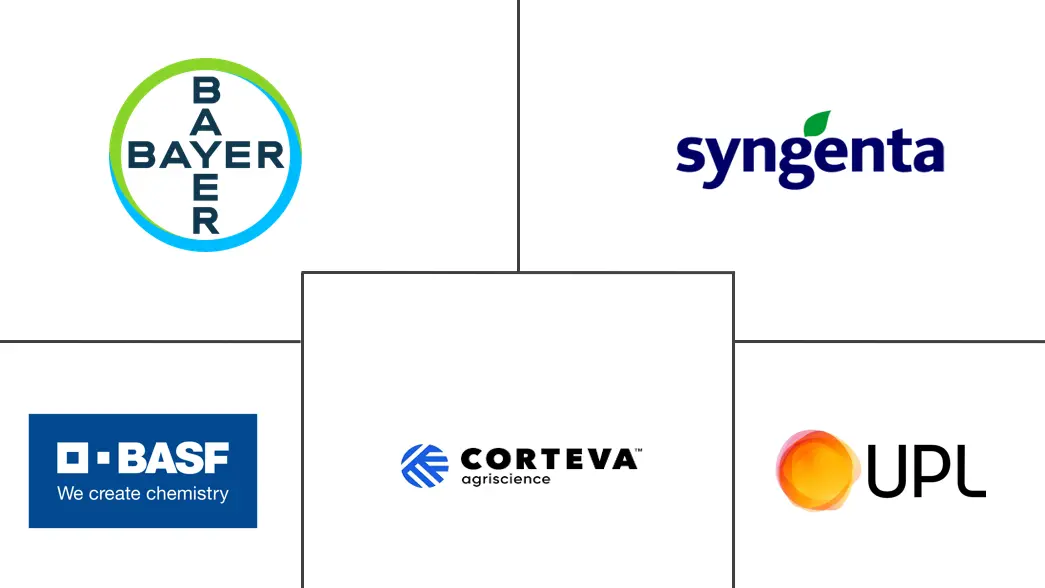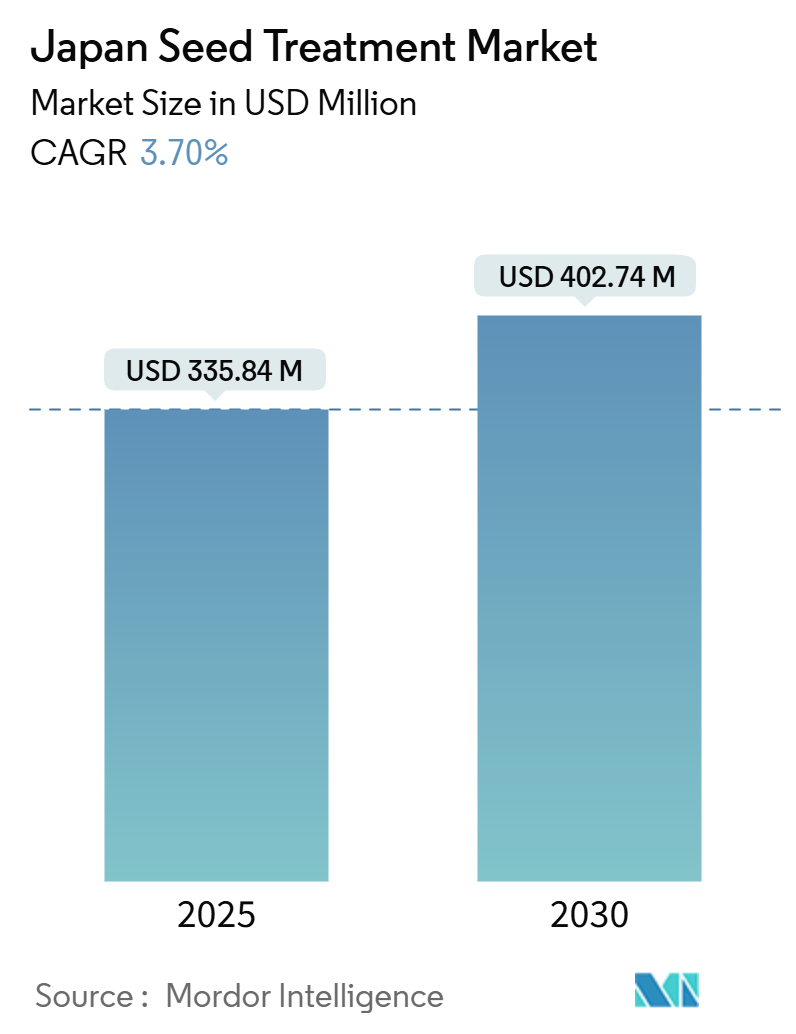
Japan Seed Treatment Market Analysis by Mordor Intelligence
The Japan Seed Treatment Market size is estimated at USD 335.84 million in 2025, and is expected to reach USD 402.74 million by 2030, at a CAGR of 3.70% during the forecast period (2025-2030).
Seed treatment involves applying biological and chemical ingredients to seeds to protect them from plant pathogens, insects, and other pests that can damage seeds, seedlings, or plants. This process enhances seed performance after harvesting and prepares them for sowing. The Japan seed treatment market is driven by several factors, including increasing costs of high-quality seeds (GM and hybrid varieties), growing restrictions on soil and foliar application of crop protection products, rising demand for effective post-harvest seed storage, high disease pressure, the need to improve agricultural productivity, and advancements in seed technology.
According to the United States Department of Agriculture, Japan's wheat production in July 2024 reached 1.08 million tons, a 5.8 percent decrease from the previous year. The harvested area in Hokkaido, the primary production region, decreased marginally due to reduced planted area, as farmers abandoned sowing in some areas due to unfavorable weather conditions in the previous fall. The yield in Kyushu fell by 10 percent due to insufficient sunshine during the grain-filling period and extended rainfall before harvest. The Ministry of Agriculture, Forestry and Fisheries in Japan reported that rice production in 2023 decreased to 7.29 million metric tons from 7.48 million metric tons in 2022, as extreme heat and drought in the Hokuriku region affected crop quality and reduced milling yields by one percent. Seed treatment enhances crop health by strengthening immunity and ensuring uniform germination. When treated with plant growth regulators, seeds receive support for germination and develop improved stress tolerance during early growth stages. The effectiveness of seed treatment for germination, particularly in challenging conditions, contributes to market growth.
The Japanese agricultural market demonstrates an increasing consumer preference for environmentally sustainable farming practices and enhanced food safety standards. This trend has generated substantial demand for eco-friendly pest and disease control methods, particularly in rice cultivation, which represents Japan's largest agricultural segment. However, market growth faces constraints from environmental impacts of chemical usage, limitations in dose capacity, challenges in protection and shelf life of treated seeds, phytotoxicity concerns from seed treatment chemicals, and insufficient awareness among agricultural practitioners.
Japan Seed Treatment Market Trends and Insights
Expansion of Organic Agriculture and Sustainable Farming Drives Seed Treatment Demand
The adoption of biological seed treatments in Japan is increasing due to sustainable farming requirements and rising seed costs. These treatments prevent plant disease transmission, protect against seed rot, and improve agricultural productivity. The organic farming sector in Japan continues to expand, emphasizing sustainable practices. Farmers implement natural composting, crop rotation, and biological pest control methods to preserve soil health and minimize environmental impact while avoiding synthetic inputs. Seed treatment remains essential in organic farming through methods including hot water treatment for pathogen elimination, seed priming and pelletizing for improved germination and handling, and NOP-compliant protectants for pest and disease prevention. The Ministry of Agriculture, Forestry, and Fisheries reports that Japan's certified organic farmland increased from 15.3 thousand hectares in 2022 to 18.8 thousand hectares in 2023.
The Japanese Agricultural Standards (JAS) Act, approved by the Japanese Ministry for Agriculture, Forestry and Fisheries, certifies organic agricultural production through third-party inspections. Under JAS regulations, organic agricultural production uses methods that maintain ecosystem health while avoiding chemically synthesized fertilizers, pesticides, and genetic recombination technologies. Biological seed treatments, such as Myco Seed Treat, contain beneficial bacteria and fungi, including mycorrhizae, which improve nutrient cycling, seedling vigor, and root growth. These treatments have OMRI certification for organic use.
Furthermore, the Japanese agriculture ministry's guidelines align with the government's Strategy for Sustainable Food Systems, which aims to reduce pesticide use by 50% and chemical fertilizer use by 30% by 2050. The strategy also targets increasing organic agriculture to 25% of total farmland. Excessive fertilizer application leads to nitrogen not being fully absorbed by crops, converting into nitrous oxide and entering the atmosphere as a greenhouse gas. The ministry's guidelines specifically address this by recommending the controlled use of chemical fertilizers in soybean and wheat production. The ministry is considering a new subsidy program for organic farming practitioners, which encourages the adoption of sustainable seed treatment products. In March 2024, Japan introduced an environmental labeling system for 23 agricultural products, including rice, tomatoes, and cucumbers. This system uses a three-star scale to rate producers' greenhouse gas reduction efforts based on pesticide, fertilizer, and fuel usage. Agriculture Ministry indicated that this initiative aims to increase consumer awareness and promote environmentally conscious choices, including biological seed treatments. These government initiatives supporting sustainable agriculture are contributing to the growth of the seed treatment market during the forecast period.
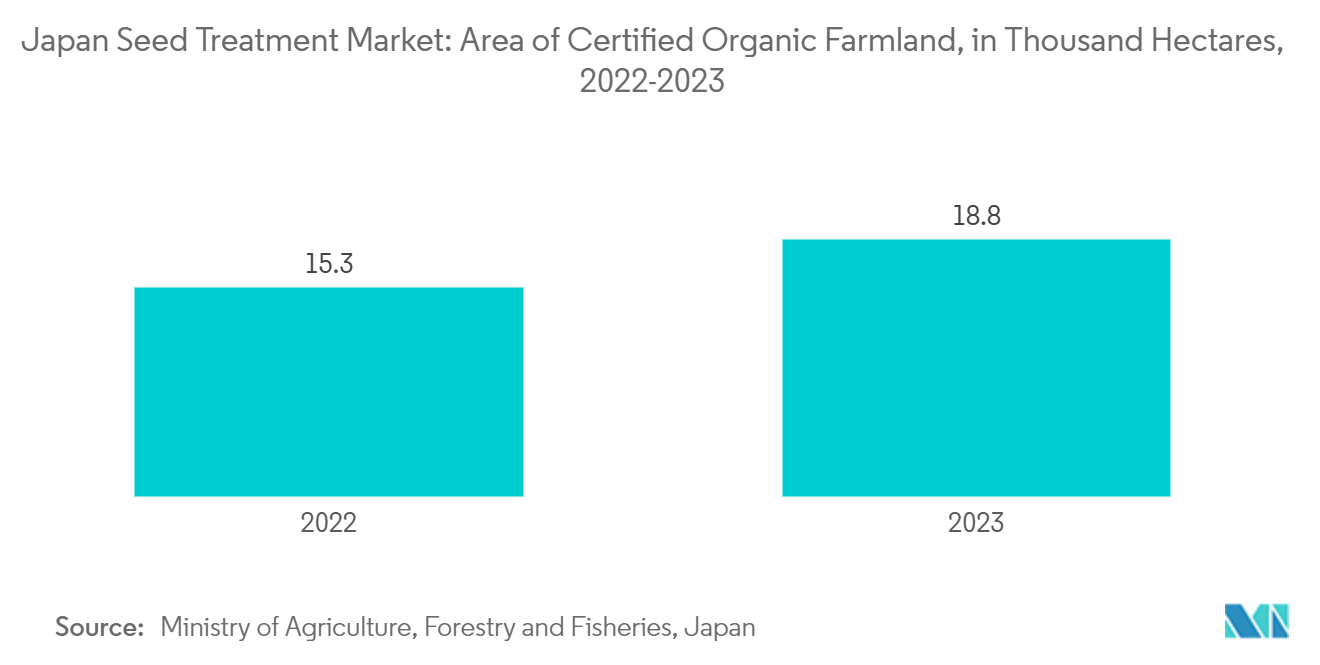
Grains and cereals Dominating the Market
Japan's cereal production encompasses three main crops including rice, wheat, and barley. Rice maintains its position as the country's principal cereal crop, both culturally and economically, due to its integral role in Japanese cuisine. The wheat industry primarily serves the production of noodles, bread, and confectionery products, with substantial import dependence. Cereal demand in the country is determined by dietary preferences, population demographics, and economic conditions. According to the Statistics Bureau of Japan, the Consumer Price Index (CPI) increased from 109.50 points in October to 110.00 points in November 2024. The domestic grains and cereals industry faces operational challenges, including production decline and agricultural sector contraction, exacerbated by rising pest infestations and climatic changes.
Grains and cereals face various pests, diseases, and pathogens that affect yield and quality. Bacterial blight in rice causes up to 70% yield loss, making it one of the most destructive rice diseases. The disease kills seedlings within two to three weeks while surviving plants become stunted, show reduced tillering, and produce poor-quality grains. Rice production in Japan decreased to 7.2 million metric tons in the marketing year 2023-24, down from 7.48 million metric tons in the previous year, due to extremely high temperatures and insufficient rainfall affecting yield and quality, according to a Global Agricultural Information Network report from the Foreign Agricultural Service (FAS) of the US Department of Agriculture. Japan primarily produces Japonica short-grain rice, with harvesting occurring in September and October across most regions. High temperatures during rice ear emergence can cause internal cracking or chalky grains with poor starch formation. This damaged rice is removed during distribution, reducing the supply of polished rice.
Seed treatment advances, including plant growth regulators, fertilizers, and microbial inoculants, help crops survive adverse climatic conditions, enabling farmers to achieve higher productivity and crop resilience. The application of polymers in chemical seed treatment is an effective technique for grains, improving product adhesion to seeds, reducing human and environmental contamination through dust control, and preventing chemical product leaching. Japan's focus on seed treatment enhances rice yields, strengthens food security, and supports the agricultural economy, contributing to market growth.
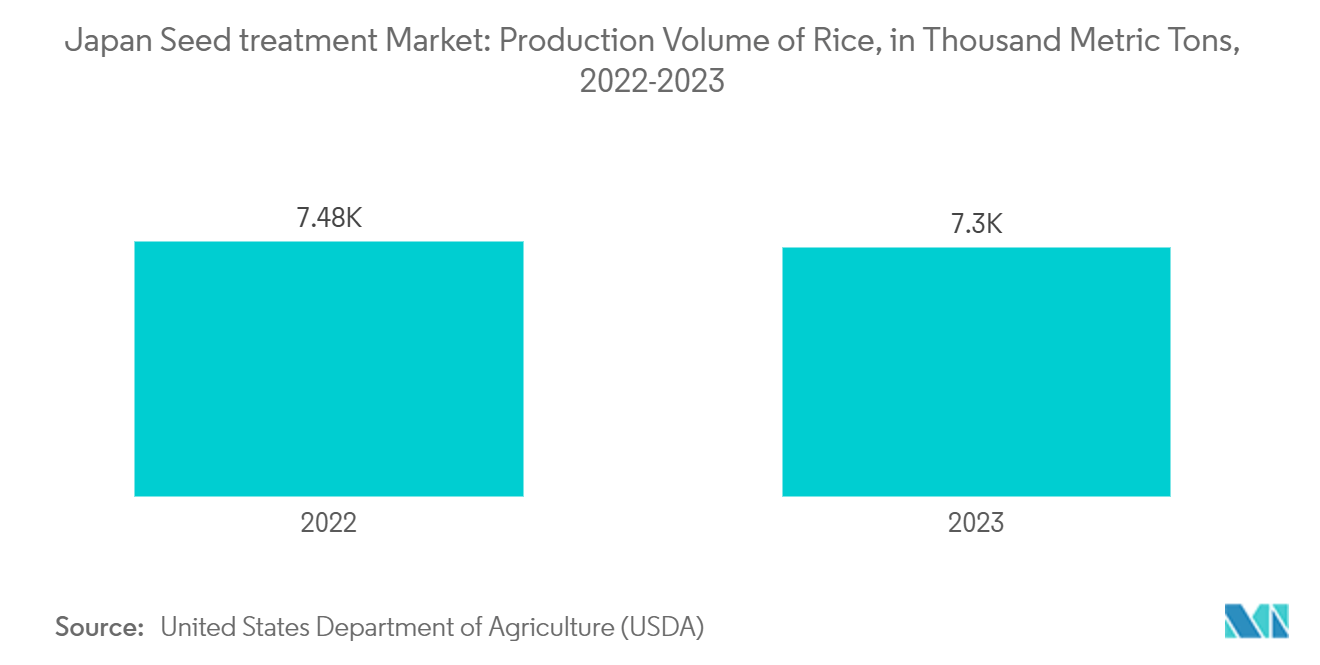
Competitive Landscape
The Japan seed treatment market is consolidated, with a few global players leading the market with a highly diversified product portfolio and several acquisitions and agreements taking place to gain a major share in the industry. Some of the major players in the Brazilian seed treatment industry include Syngenta AG, Bayer CropScience AG, BASF SE, Corteva Agriscience, and FMC Corporation are some of the major players who are operating in the region. The companies are not only competing based on product quality or product promotion but are also focused on other strategic moves, like acquisitions and expansions, to acquire a larger share and expand their acquired market size.
Japan Seed Treatment Industry Leaders
Syngenta AG
Bayer AG
BASF SE
Corteva Agriscience
FMC Corporation
- *Disclaimer: Major Players sorted in no particular order
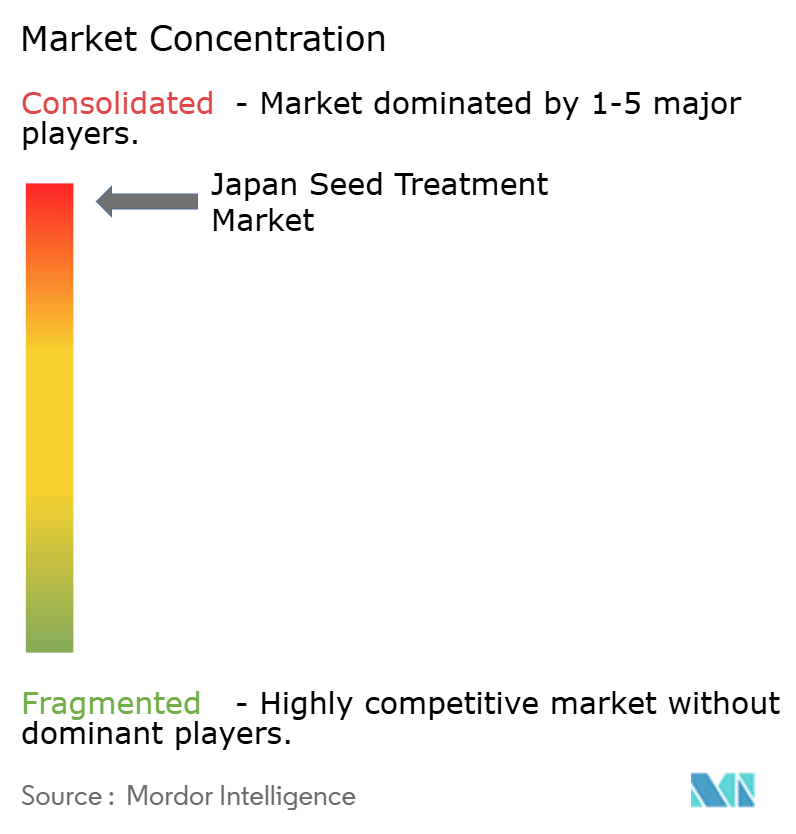
Recent Industry Developments
- May 2024: FMC Corporation, a global agricultural sciences company, collaborated with Optibrium, a developer of software and artificial intelligence (AI) solutions for small molecule discovery. The agreement supports FMC's strategic plan to accelerate the discovery and commercialization of its product pipeline including seed treatment products.
- September 2022: Syngenta Seedcare and Bioceres Crop Solutions collaborated to introduce biological seed treatments to markets, including Japan. Under the agreement, Syngenta became the exclusive global commercialization distributor for Bioceres' biological seed treatment solutions, and both companies continued their collaboration under the existing framework. Through their long-term R&D partnership, the companies jointly develop new products while accelerating the registration of products in the pipeline.
Japan Seed Treatment Market Report Scope
Seed treatment is a process where chemicals are used to treat or dress seeds before planting. The Japan seed treatment market is segmented by Chemical Type (Synthetic, Biological), Product Type (Insecticide, Fungicide, Nematicide, and Other Product Types), Application Technique (Seed Coating, Seed Pelleting, Seed Dressing, and Other Application Techniques), and Crop Type (Commercial crops, Fruits and Vegetables, Grains and Cereals, Pulses and Oilseeds, and Turf and Ornamental Crops). The report offers market size and forecasts in value (USD) for all the above segments.
| Synthetic |
| Biological |
| Fungicides |
| Insecticides |
| Nematicides |
| Other Product Types |
| Commercial Crops |
| Fruits and Vegetables |
| Grains and Cereals |
| Pulses and Oilseeds |
| Turf and Ornamental crops |
| Chemical Type | Synthetic |
| Biological | |
| Product Type | Fungicides |
| Insecticides | |
| Nematicides | |
| Other Product Types | |
| Crop Type | Commercial Crops |
| Fruits and Vegetables | |
| Grains and Cereals | |
| Pulses and Oilseeds | |
| Turf and Ornamental crops |
Key Questions Answered in the Report
How big is the Japan Seed Treatment Market?
The Japan Seed Treatment Market size is expected to reach USD 335.84 million in 2025 and grow at a CAGR of 3.70% to reach USD 402.74 million by 2030.
What is the current Japan Seed Treatment Market size?
In 2025, the Japan Seed Treatment Market size is expected to reach USD 335.84 million.
Who are the key players in Japan Seed Treatment Market?
Syngenta AG, Bayer AG, BASF SE, Corteva Agriscience and FMC Corporation are the major companies operating in the Japan Seed Treatment Market.
What years does this Japan Seed Treatment Market cover, and what was the market size in 2024?
In 2024, the Japan Seed Treatment Market size was estimated at USD 323.41 million. The report covers the Japan Seed Treatment Market historical market size for years: 2019, 2020, 2021, 2022, 2023 and 2024. The report also forecasts the Japan Seed Treatment Market size for years: 2025, 2026, 2027, 2028, 2029 and 2030.
Page last updated on:
